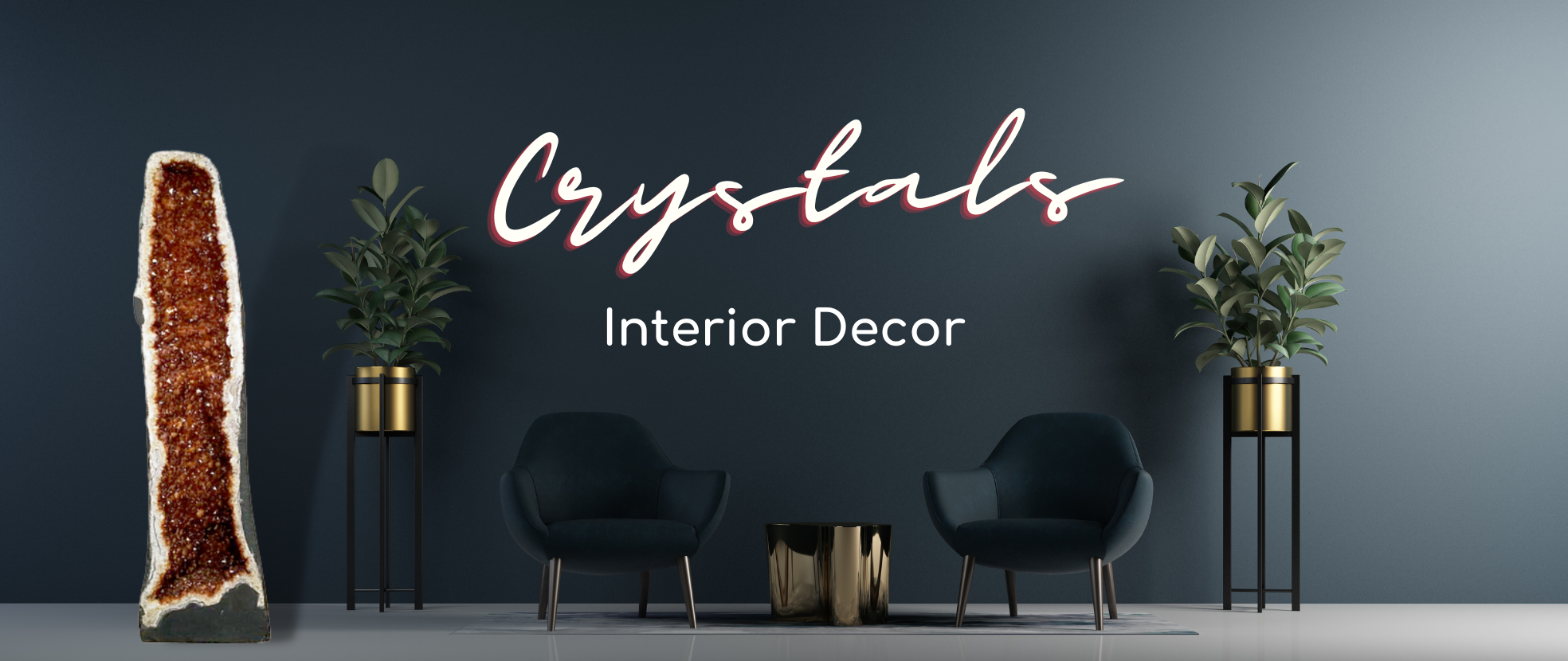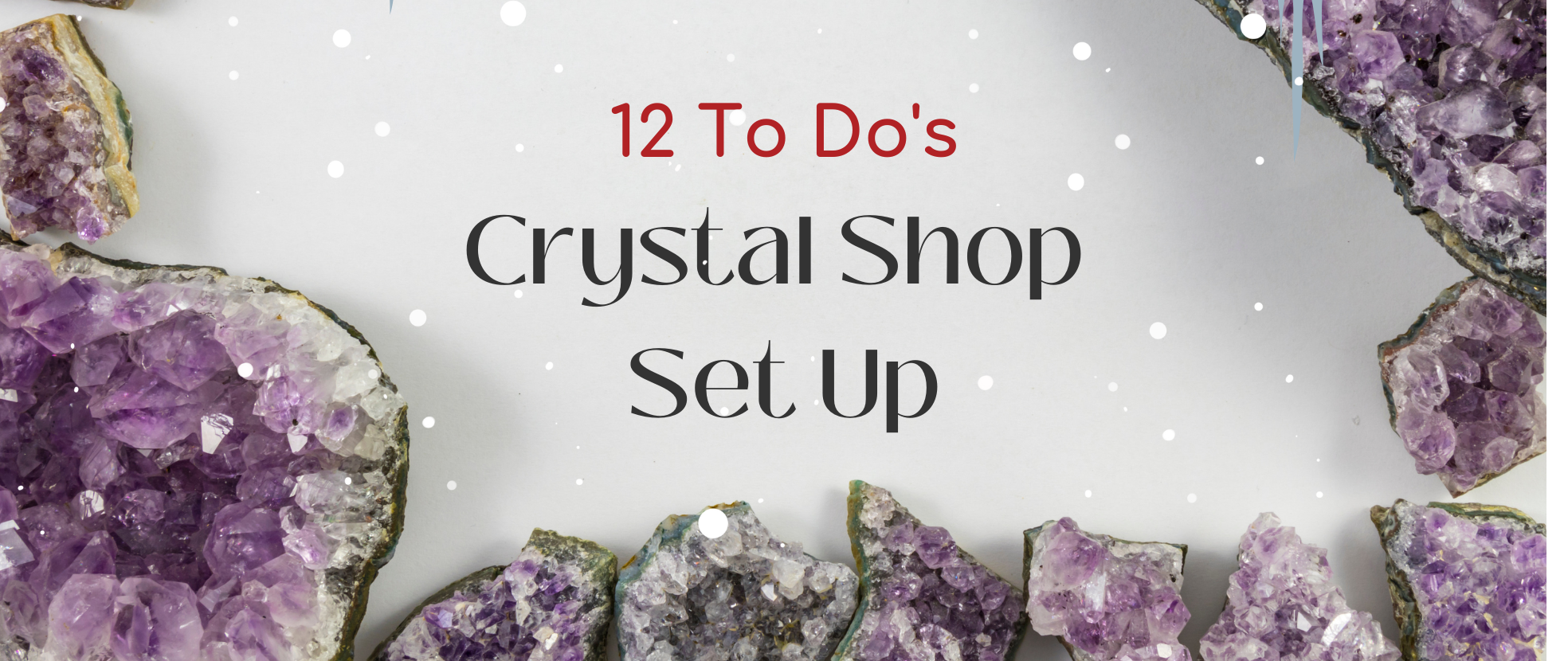How do you keep your healing crystals, gem collection, and jewelry in mint condition?
It's not just about tucking them away from dirt (although this is very important!), for this is only one of the many things that can influence the value and beauty of a gemstone.
Storage, handling, cleaning, and how you protect your gems from natural elements all play a crucial part in the equation.
Let's talk about proper care to prolong the longevity of your crystal collection.
6 Factors That Cause Damage to Your Crystals
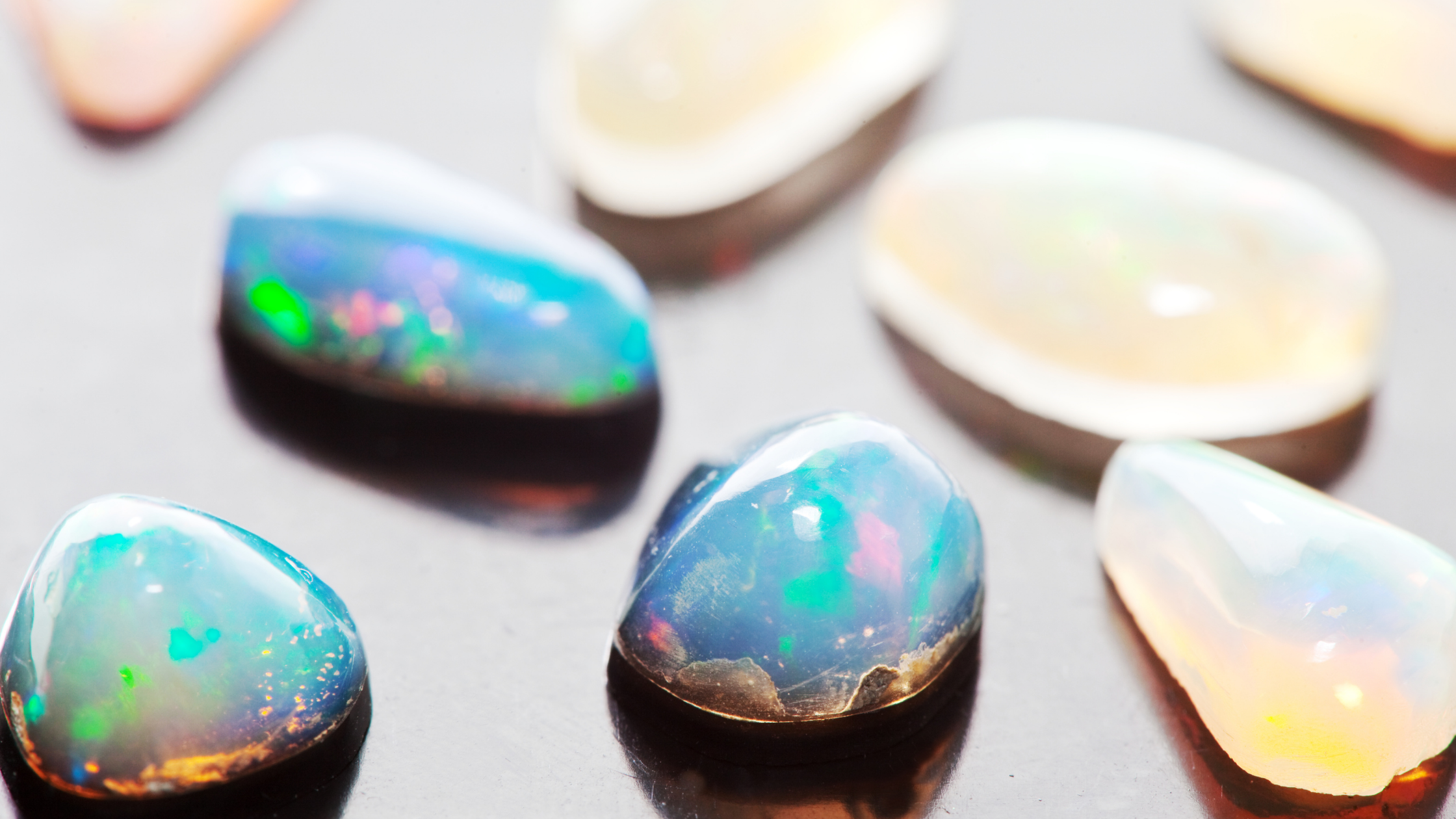
First off, what are the factors or elements that can cause damage to your prized gemstones or crystals? More than knowing by heart the unique properties of every stone in your possession, it's vital to be aware of all the external factors that threaten the quality of your gems.
Below are the notorious enemies of a beautiful, well-preserved gem:
1. Temperature changes - Extreme fluctuations in temperature can produce cracks in your gemstone or cause existing cleavages to spread throughout the body. Technically, this damage is called thermal shock.
This happens when there's a sudden shift from warm to frigid temperatures. Thermal shock is common in gems like apatite, diamond, kunzite, tanzanite, and iolite. Opal is also highly prone to fractures (also called crazing) resulting from extreme heat or cold.
A good practice to protect temperature-sensitive gems like opal is to store them in glass vials filled with water. This also displays the colours of the specimen vibrantly.
2. Constant light and heat exposure - Prolonged exposure to light and heat can damage organic gems such as amber, coral, jet, and pearls.
Light and heat can also cause the colours of amethyst, citrine, coloured agates, and topaz gemstones to fade. Avoid placing these gems near the window and keep them away from direct sunlight as much as possible.
3. Exposure to changing humidity levels - Some gemstones are vulnerable to humidity, and exposure to heat can crack them. It may not be a good idea to store opals in a tightly sealed vault or safe as low humidity environments can dry them out.
4. Chemicals and other substances - Exposure to chlorine, makeup, and perfume can discolour highly absorbent gems such as pearls. Ammonia can blemish the surface of softer stones like malachite and turquoise.
Other substances that could affect the polish of your gems are heat and oils. So it's best to avoid wearing jewelry while cooking to preserve their colour and sheen.
5. Storing crystals incorrectly - This is one of the most leading culprits behind scratched and chipped off crystals. Storing polished stones with raw stone can bruise the crystals. This is often the case when both are packed in bags or pouches that are moved a lot. This can also diminish the crystal’s clarity, lustre, and sheen.
Delicate crystals such as amethyst, calcite, fluorite, and opal need to be wrapped in fabric or tissue paper to keep them intact.
To protect the quality of your gems and healing crystals it's also important that you know how to store them properly, whether in your home or office.
6. Water - A lot of crystals can be washed under a tap which is the easiest way to rid them of dust, grime, or fingerprints. However, there are also crystal species that tarnish, fracture, or dissolve when exposed to water.
These crystals contain iron and may oxidize and produce rust when in contact with water:
- Galena
- Lodestone
- Malachite
- Magnetite
- Pyrite
- Tangerine quartz
The following will fade or dissolve when they get wet:
- Angelite
- Calcite
- Desert rose
- Halite
- Labradorite
- Turquoise
Crystals that may fracture when exposed to water (hot, cold, and saltwater):
- Carnelian
- Lepidolite
- Mica
- Moldavite
- Obsidian
Simple Storage Options to Take Good Care of Your Stones
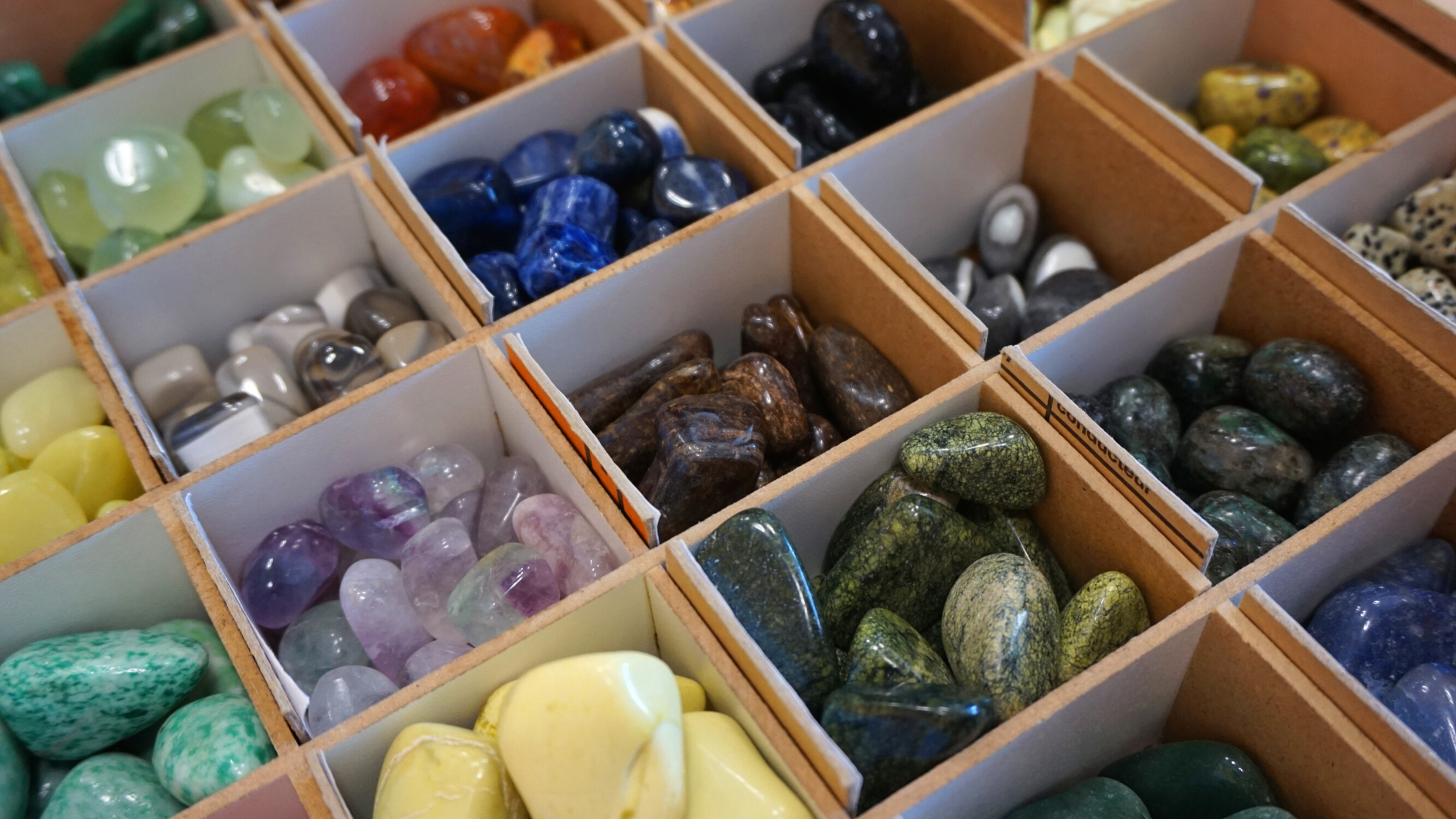
Keep your stones and crystals accessible and away from elements that damage them using these storage and organizing hacks:
1. Place them in a drawer - This is ideal if you have a vast collection of crystals. You will want to separate the harder stones from the softer ones to protect them from damage.
Note that crystals have varying durability and wearability features. And crystals with a higher hardness rating like quartz (7) will scratch softer crystals like calcite, fluorite, gypsum, and selenite if they're crammed together in one container.
Use small gift boxes and assign a [box for every species]. Another way is to create compartments within your drawer and categorize your stones according to hardness, species, colour, or healing properties.
2. Use a cloth bag - Many people love taking their crystals with them when they travel, especially crystals that offer protection and safety like amethyst, black tourmaline, moonstone, and malachite.
Directly putting stones in your pocket is a sure way to get them cracked or chipped. They can be damaged by harder or sharper objects like your keys. Gems can also scratch your phone if you put them in the same pocket.
To pack them safely, put them in a velvet cloth pouch. If you're bringing multiple crystals, store them in individual pouches and keep similar crystals together. This prevents the softer stones from rubbing against tougher ones even when they're inside your bag. This also makes it easier to identify which stones are put where.
3. Custom divided container - Got a knack for DIY? You don't have to buy a brand new divided container to give your tumbled stones and soft crystals a home ” just grab whatever wood or plastic case you have lying around and cut some pieces of felt to create a divided container. Saves you dollars and instantly gives you a decent container.
4. Put them in a display shelf - Crystal shelves are a great way to organize small and large crystals. Displaying them on a shelf also makes it easier for you to pick the ones you want to use for a given occasion.
If you're just starting out with crystal collecting, designate a shelf on your bookcase where you want to house your crystals. Make sure to wipe off dust or debris before placing your crystals. Then organize them based on species, size, colour, shape, or polish.
As your collection expands, you may want to dedicate an entire display shelf solely for crystals. Shelves come in various forms and sizes. But shelves commonly used for crystal display are triangles or mountain-shaped shelves. Place the smaller stones on the top and the larger ones on the bottom.
Shelves can be made of wood, metal, or glass. The best choice depends entirely on your preference and how you want the energies of different crystals to flow within your space.
5. Display cabinet - You may also want to store your crystals in a display cabinet which can be a stunning focal point in a living room. If you're collecting crystals for ornamental purposes, glass cabinets are a great choice to make your collection visible.
Not an ideal pick if you're using your crystals for healing, as glass cabinets may expose your crystals to negative energies.
6. Thumbnail case/display box - This a great storage option for small specimens; a popular choice among collectors who want to protect their gems from dirt, light, and moisture but also like to flaunt their precious crystals. Made of glass or acrylic, these durable cases are often used in museums for long-term storage.
But First, Clean Your Crystals!
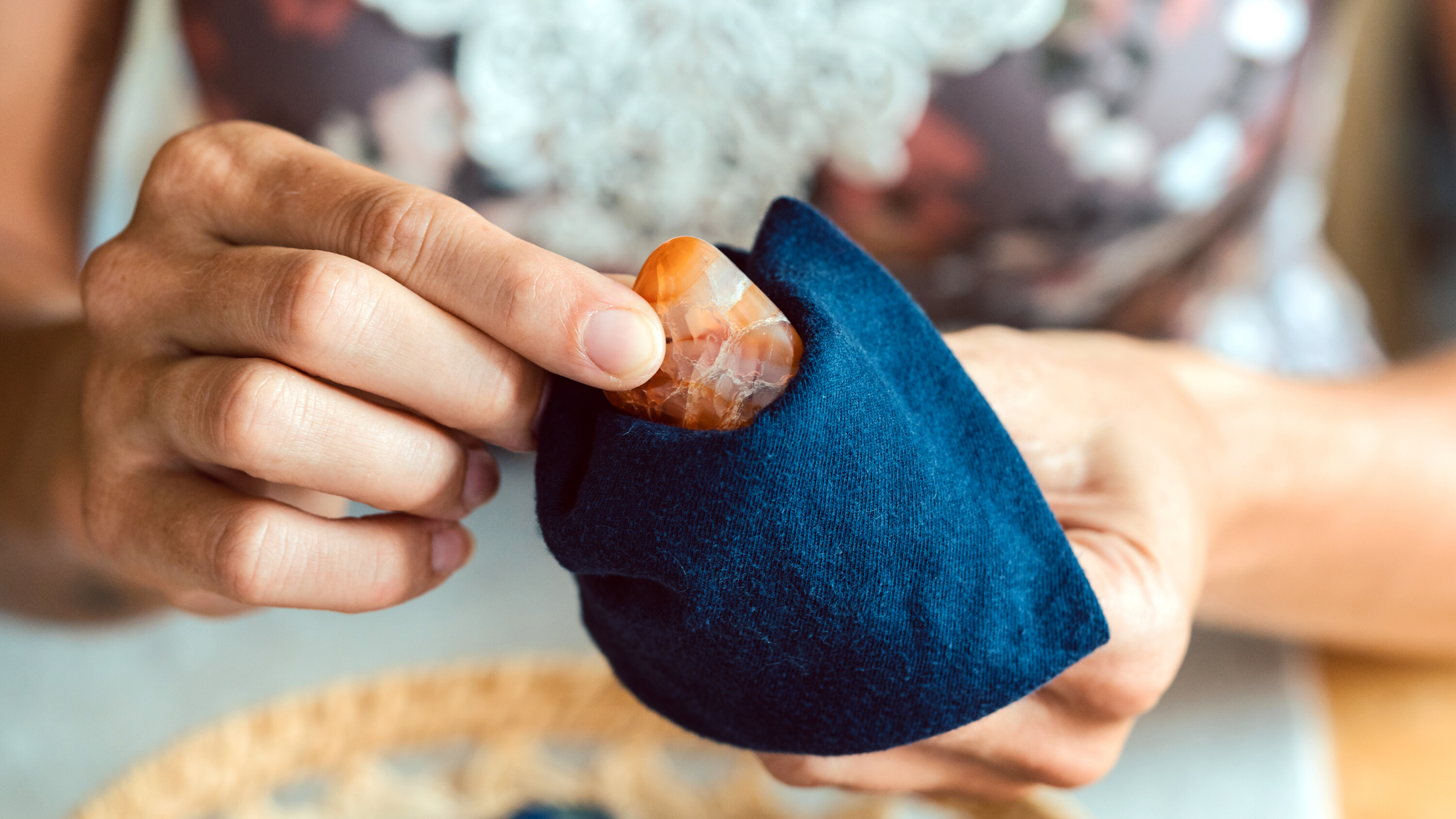
Applying all the best practices in storage and display would all go to waste if you don't first make the effort to cleanse your crystals. Trapped dirt, oil, and grime buildup will gradually reduce the beauty and value of your crystals, even if they're safely stored.
Here are some popular stones and the appropriate technique to clean them:
1. Amethyst
What you need: soft brush, warm water, and detergent
This famed purple quartz variety is safe to be cleaned using warm soapy water. Use a soft-bristled brush to dislodge any dirt on the surface. Never subject amethyst to heat as it can crack and fade its colour when exposed to high temperatures.
2. Carnelian
What you need: Moist cloth
Remove dirt and debris using moist cloth, then dry it by brisk-rubbing dry cloth on all surfaces.
3. Citrine
What you need: soft brush, detergent, and warm water
Like amethyst and other quartz types, citrine can be made spotless clean using warm water and soap. Observe proper care when wiping off dirt to prevent scratching and other damage.
4. Emerald
What you need: detergent, warm water, and soft brush
Use warm soapy water and gently scrub your emerald stone.
5. Garnet
What you need: detergent, warm water, and microfibre cloth
Clean with warm soapy water and use a tightly woven microfibre or soft cloth. Gently wipe off the surface.
6. Lapis lazuli
What you need: detergent, cold/tap water, and soft cloth
Clean a small area first where dirt is visible and do it quickly. Do not keep the stone wet for too long. Prolonged contact with water can dissolve and damage the stone's calcite content.
7. Opal and pearl
What you need: detergent, room temperature water, and mesh rag
Practice extra care when cleaning fragile opals and pearls. Opal has a Mohs hardness rating of 5.5 to 6.5, while pearl has 2.5 to 4. Household dust is rated 7 to 7.5. Most dust could scratch pearls and opals so gently wipe them with a mesh rag to prevent damage.
Cleaning and Storage of Jewelry/Accessories

If you have more jewelry and accessories in your collection, here are some tips to keep them in pristine condition especially in hot weather.
Cleaning
1. Use a soft cloth and wipe off your jewelry at the end of the day.
Excessive contact with sweat can damage your jewelry. Sterling silver is vulnerable to the body's natural oils and tends to turn black when constantly exposed to sweat. So wipe off your jewelry right after wearing them.
Use a microfibre cloth (not a bath towel) to clean them. The loops in a bath towel may catch details of your jewelry and loosen the gemstones.
2. Allow your skin to fully absorb skin care products before wearing your pieces.
Some gems are highly porous and could absorb the products you put on your skin. And some chemical contents in creams and lotions can be damaging to jewelry.
So when you need to apply sunscreen or lotion, do it before you put on your jewelry. Let your skin absorb the product completely. Make sure your skin is totally dry when you put on your pieces.
Storage
1. Store your jewelry in a cool and dark place when not in use.
Too much sunlight can fade gemstones such as amethyst, citrine, ametrine, fluorite, and rose quartz. When it gets extremely hot, the metal of your jewelry may easily warp or bend. It's always best to keep your jewelry in a cool, dark place away from elements to avoid damage.
2. Keep your jewelry in separate cases or containers.
Like how abrasive materials can scratch your pieces, hard gemstones like diamonds can damage softer stones if they're stored loosely. You can prevent this by putting your jewelry in separate jewelry boxes, the ones lined with fabric for added protection.
If you need more expert tips to care for and maintain the quality of your gems, feel free to reach out to us. The rock specialists at Stonebridge Imports are always happy to help!
Sources:
Wykoff, G. (n.d.). Gemstone Care Guide. International Gem Society. Accessed at https://www.gemsociety.org/article/care-maintenance-gemstones/
Opal and Pearl Care Guide. (n.d.). International Gem Society. Accessed at https://www.gemsociety.org/article/clean-pearls-opals/
Gandy, B. (2021, January 21). 5 Ways To Store and Organize Crystals. Organized-ish. Accessed at https://www.lelaburris.com/store-organize-crystals/
How to Care for Your Jewelry in Hot Weather. (2018, June 14). The Loupe. Accessed at https://www.truefacet.com/guide/how-to-care-for-your-jewelry-in-hot-weather/
More than the Mohs Scale “ Understanding Gem Durability. (n.d.). 4cs.gia.edu. Accessed at https://4cs.gia.edu/en-us/blog/more-than-mohs-scale-gem-durability/
Guide to Organizing Your Gemstone Collection. (n.d.). International Gem Society. Accessed at https://www.gemsociety.org/article/guide-organizing-gemstone-collection/
Ancillette, M. (n.d.). How to Store Healing Crystals and Stones. Angel Grotto. Accessed at https://angelgrotto.com/crystals-stones/storing/
Christensten, E. (2021, January 10). How to Store Crystals. WikiHow. Accessed at https://www.wikihow.com/Store-Crystals
Gemstones Are Affected By Mechanical and Heat Factors. (n.d.). Gemstone. Accessed at https://gemstn.com/?at=nv3139&ln=en
King, H. (n.d.). Mohs Hardness Scale. Geology.com. Accessed at https://geology.com/minerals/mohs-hardness-scale.shtml
Kybert, A. (n.d.). Who Knew Skincare Could Affect Your Jewellery? BIRCHBOX. Accessed at https://www.birchbox.co.uk/features/article/who-knew-skincare-could-affect-your-jewellery




